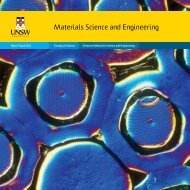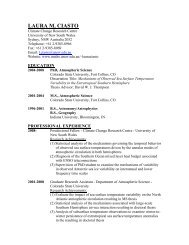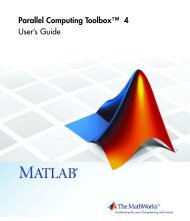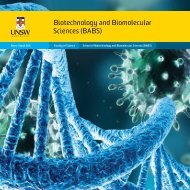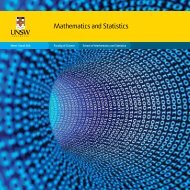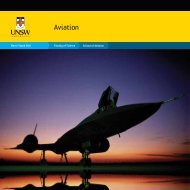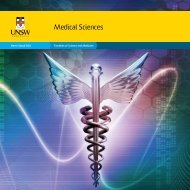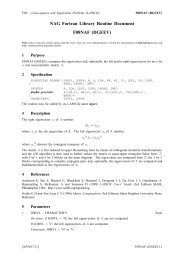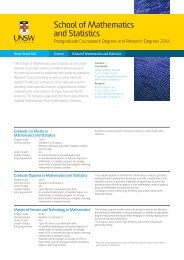2011 Postgraduate Research Competition - UNSW Science - The ...
2011 Postgraduate Research Competition - UNSW Science - The ...
2011 Postgraduate Research Competition - UNSW Science - The ...
You also want an ePaper? Increase the reach of your titles
YUMPU automatically turns print PDFs into web optimized ePapers that Google loves.
Page |12<br />
A picture tells a thousand nerves<br />
Edward Lum and Helen Swarbrick<br />
School of Optometry & Vision <strong>Science</strong><br />
Abstract<br />
Orthokeratology (OK) is a clinical technique that uses specially designed rigid contact lenses<br />
to reshape the corneal contour to temporarily correct refractive error. This study aimed to<br />
map the sub-basal nerve plexus (SBNP) in the cornea of an OK lens wearer.<br />
Method: Laser scanning in vivo confocal microscopy was performed on two subjects: a nonlens<br />
wearer and medium-term OK lens wearer (9 years of wear). Scans were performed on<br />
the right eye while the left eye fixated a moving target. A total of 575 and 676 contiguous<br />
images of the SBNP were taken from the non-lens and OK lens wearing subjects respectively.<br />
<strong>The</strong>se images were used to construct maps of the central to mid-peripheral SBNP.<br />
Results: In the non-lens wearing eye, nerves radiated towards a whorl-like complex centred<br />
nasally and inferiorly. In the OK lens wearing eye, this whorl pattern was absent, replaced by<br />
a tortuous network of nerve fibres centrally, and thicker curvilinear fibres mid-peripherally,<br />
particularly in the nasal, inferior and temporal regions.<br />
Conclusion: This is the first study to map the corneal SBNP in an OK lens wearer. It<br />
demonstrates that OK lens wear alters the normal SBNP distribution observed in healthy, nonlens<br />
wearing eyes.<br />
Abstract<br />
Using viruses to break up bacterial infections<br />
Janice Hui, Scott Rice and Staffan Kjelleberg<br />
School of Biotechnology & Biomolecular <strong>Science</strong>s<br />
Bacteria can also get sick because of viruses, called bacteriophages/phages. As with viruses<br />
on higher organisms, phages are host-specific and undergo two different life cycles. In the<br />
lytic stage, the host cell dies, while in the lysogenic stage the viral genome integrates with<br />
host DNA, establishes mutual symbioses conferring adaptation and survival benefits that are<br />
passed on to subsequent cell generations.<br />
Pseudomonas aeruginosa strain PAO1 is a major pathogen infecting cystic fibrosis patients by<br />
forming prolific slimes, or biofilms. <strong>The</strong> Pf4 phage infects its host PAO1 during biofilm<br />
development when it converts from the lysogenic to lytic stage.<br />
Bacteria suffer environmental stress and undergo adaptive mutation when biofilms become<br />
over-populated and nutrient-poor, switching on the phage lytic cycle and killing biofilm cells.<br />
I am investigating how to use phage in targeted control of biofilms and infections.<br />
My research has identified a protein (repressor C) of PAO1 responsible for viral infection<br />
immunity. Mutations in this protein switch the Pf4 phage to its lytic stage, killing the host.<br />
Furthermore, large deletions of the Pf4 phage genome within PAO1 cause biofilm cell death.<br />
We plan to use these findings to develop biofilm control treatments, especially for preventing<br />
chronic infections with cystic fibrosis patients.<br />
cutting-edge discovery science|



